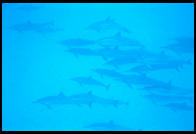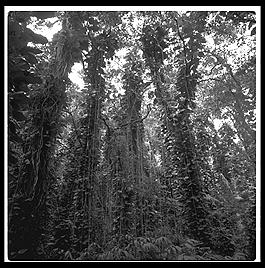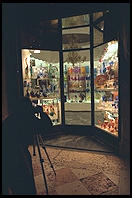
On Photography
by Susan Sontag, reviewed by Philip Greenspun; created 1998
Site Home : Photography : On Photography

by Susan Sontag, reviewed by Philip Greenspun; created 1998
Site Home : Photography : On Photography
 On Photography by Susan Sontag, 1977 Anchor Books.
ISBN 0-385-26706-1. 208 pages. You can order this book from amazon.com
.
On Photography by Susan Sontag, 1977 Anchor Books.
ISBN 0-385-26706-1. 208 pages. You can order this book from amazon.com
.
Go into a bookstore with a photography criticism section. Pick up a book and open it to a random page. If the text on the page seems laughably incoherent then you've gotten hold of something written by a university professor. These books really ought to be pulped at the bindery with a few copies reserved for the author's tenure committee but for some reason they occasionally make it past the book buyer at a reputable store and hence you end up reading feminist deconstruction of a diamond jewelry ad.
It is a shame that the university types manage to take up shelf space that could be devoted to more copies of these essays from The New York Review of Books and books by real photographers.
Sontag first explains why it is necessary to step back and think about photographs:
Humankind lingers unregenerately in Plato's cave, still reveling, its age-old habit, in mere images of the truth. But being educated by photographs is not like being educated by older, more artisanal images. For one thing, there are a great many more images around, claiming our attention. ... In teaching us a new visual code, photographs alter and enlarge our notions of what is worth looking at and what we have a right to observe. They are a grammar and, even more importantly, an ethics of seeing. Finally, the most grandiose result of the photographic enterprise is to give us the sense that we can hold the whole word in our heads--as an anthology of images.
Sontag quickly dispenses with the notion that photography is a form of note-taking: "[The Farm Security Administration photographs] would take dozens of frontal pictures of one of their sharecropper subjects until satisfied that they had gotten just the right look on film--the precise expression on the subject's face that supported their own notions about poverty, light, dignity, texture, exploitation, and geometry. In deciding how a picture should look, in preferring one exposure to another, photographers are always imposing standards on their subjects."
People take pictures of their family: "A family's photograph album is generally about the extended family--and often, is all that remains of it."
 People
take pictures on vacation: "The very activity of taking pictures is soothing, and
assuages general feelings of disorientation that are likely to be exacerbated by
travel. ... [Taking pictures] gives shape to experience: stop, take a photograph,
and move on. The method especially appeals to people handicapped by a ruthless
work ethic--Germans, Japanese, and Americans. Using a camera appeases the anxiety
which the work-driven feel about not working when they are on vacation and
supposed to be having fun."
People
take pictures on vacation: "The very activity of taking pictures is soothing, and
assuages general feelings of disorientation that are likely to be exacerbated by
travel. ... [Taking pictures] gives shape to experience: stop, take a photograph,
and move on. The method especially appeals to people handicapped by a ruthless
work ethic--Germans, Japanese, and Americans. Using a camera appeases the anxiety
which the work-driven feel about not working when they are on vacation and
supposed to be having fun."
Anyway, people take pictures.
In many portions of On Photography, Sontag considers why photographers love taking pictures of losers. She notes that, unless there is already favorable public sentiment, these pictures very seldom persuade anyone to care.
 Sontag
doesn't seem to know much about how photography is accomplished. Rather than just
say this, she casually drops random comments throughout her text intended to show
the opposite (e.g., she thinks that a Hasselblad is somehow a typical camera for
taking pictures of distant animals in Africa). Despite this handicap, she has an
interesting section about how photographers pretend to be artists. For example,
Ansel Adams claiming that "A photograph is not an accident--it is a concept. The
'machine-gun' approach to photography--by which many negatives are made with the
hope that one will be good--is fatal to serious results." Sontag notes (correctly
in my opinion) that there is an element of luck in most great pictures.
Sontag
doesn't seem to know much about how photography is accomplished. Rather than just
say this, she casually drops random comments throughout her text intended to show
the opposite (e.g., she thinks that a Hasselblad is somehow a typical camera for
taking pictures of distant animals in Africa). Despite this handicap, she has an
interesting section about how photographers pretend to be artists. For example,
Ansel Adams claiming that "A photograph is not an accident--it is a concept. The
'machine-gun' approach to photography--by which many negatives are made with the
hope that one will be good--is fatal to serious results." Sontag notes (correctly
in my opinion) that there is an element of luck in most great pictures.
No Index.
Text and photos copyright 1991-1998 Philip Greenspun. The story of the dolphins is chronicled at the end of my underwater photography primer.